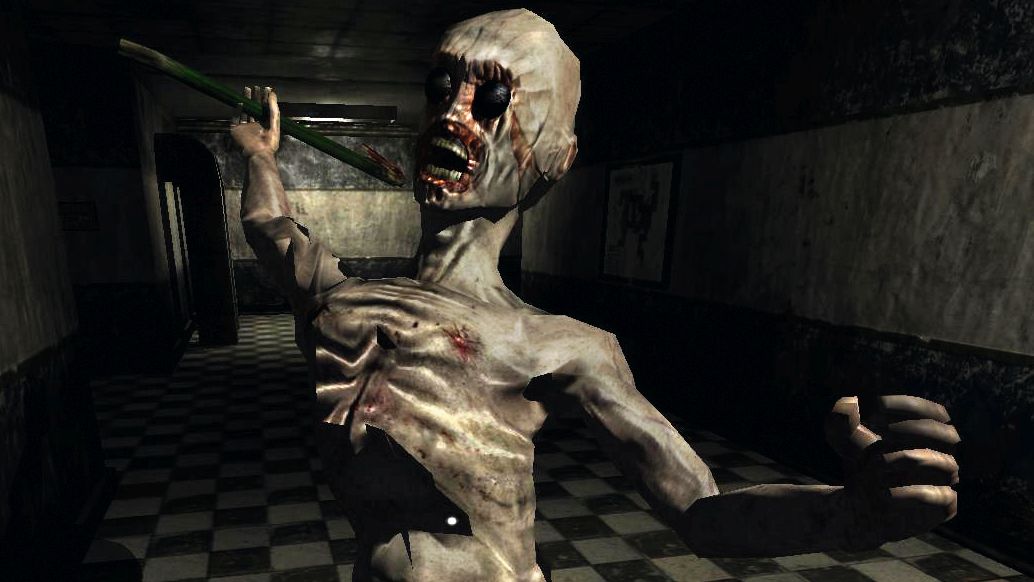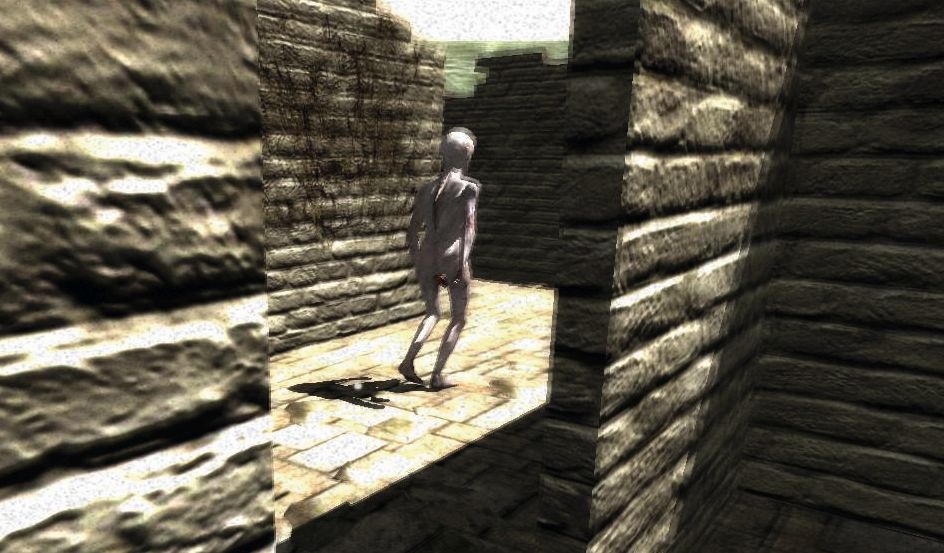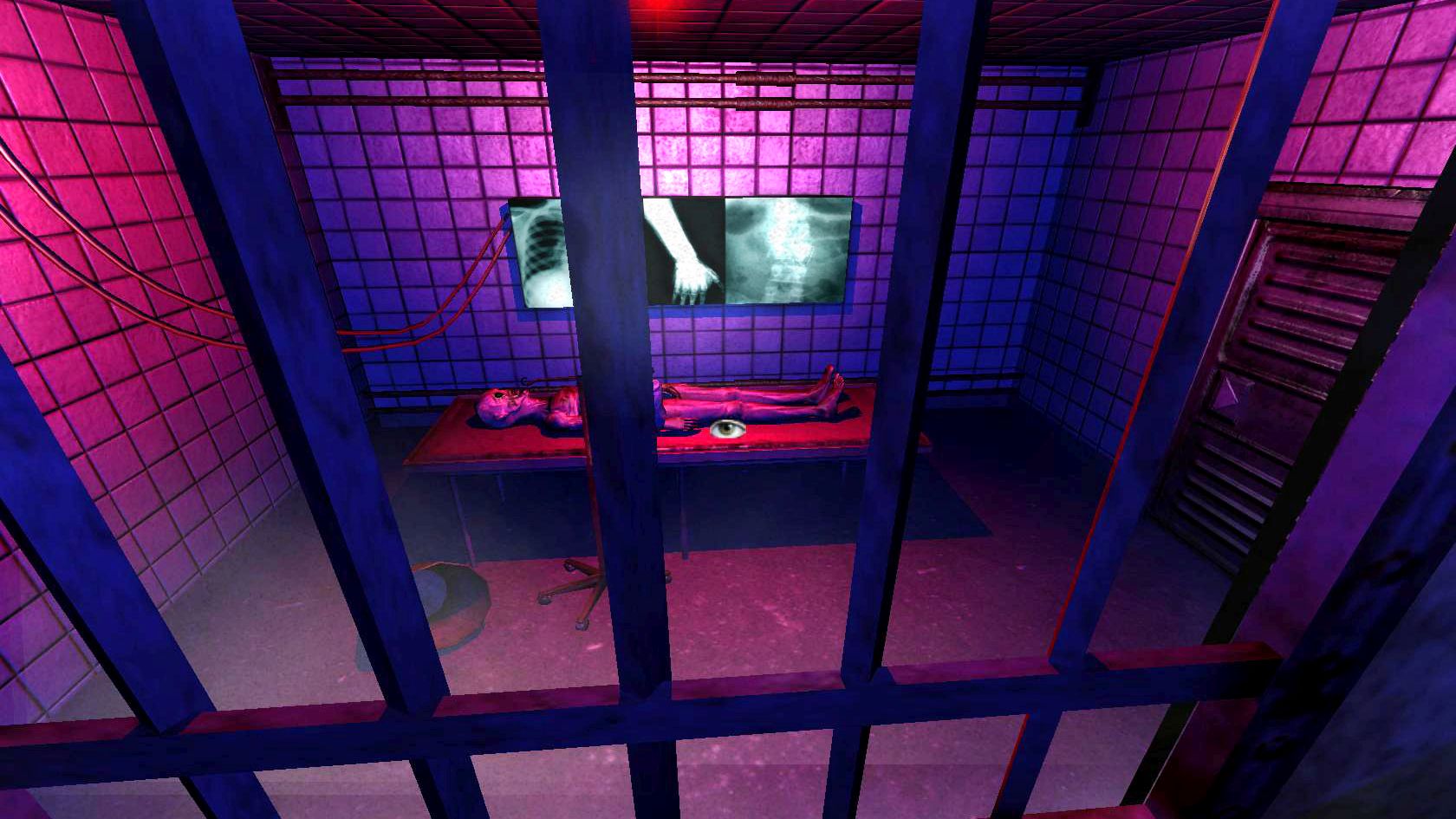Braving the old corridors of Penumbra: Black Plague


Reinstall invites you to join us in revisiting PC gaming days gone by. Today, Jon rummages around in corpses looking for the keys to Penumbra: Black Plague.
Penumbra: Black Plague opens bravely by virtually spelling out its eventual outcome. Your character, Philip LaFresque, frantically types an email to a friend, imploring him to finish a job that despite his best efforts he could not. The player knows from the outset that this game won’t necessarily end in heady triumph. But in order to see how things have got to this desperate point, we’ll need a flashback; cue the harp swirls and wavy lines.
The game starts in earnest as you regain consciousness in a dingy locked room in a scientific facility in the freezing wastes of Greenland, having been knocked-out by an unknown entity at the end of Penumbra: Overture. Philip has previously been summoned to the facility by his father, chief translator for a scientific body called The Archaic, who have ill-advisedly disturbed the subterranean resting place of an ancient spiritual body called the Tuurngait. In retaliation, the Tuurngait have set loose a virus which has either killed, or possessed and transformed all the scientists at the station. These zombified things roam the facility, convincingly selling the notion that perhaps it’s better to let sleeping gods lie.
Black Plague consolidated the solid template for the Amnesia games that followed, with the accent on exploration, enviro-puzzling and as far as possible the steadfast avoidance of any contact with the bads of the piece. Once you’ve worked out how to escape from that first locked room, armed with just a flashlight that consumes batteries at an alarming rate, your time is spent solving problems and assimilating the scraps of story revealed through notes and computer files that you find scattered throughout the facility.

When I first played, I was taken with Frictional’s proprietary HPL game engine and its largely QTE- and animation-free way of handling object interaction. Wherever you can pick up or manipulate something, the reticule turns into a small hand icon, which can grab items and use them in the environment. Need to jemmy open a gate? Pick up that length of steel and waggle it back and forth near the lock. Looking for batteries in a desk? Open each draw in turn by dragging it out with your floating hand. This is little more than a well-disguised gravity gun but it signifcantly enhances the sense of player agency and control.
If I were to include some additional keyboard commands for this game, I’d maybe include H to auto-hide, B to bolt (like Usain) and Ctrl to withhold an involuntary bowel movement. Actually, although Black Plague is frequently unnerving, the Infected themselves aren’t that scary, resembling as they do sinewy gingerbread men—apart from their odd penis/umbilicus arrangement, of course. But what they lack in visual menace is compensated for by the highly effective audio, or when you see the telltale flash of their torch beam at the end of a corridor. If this was an RPG, you’d put all your skill points into Cower.
Although Black Plague is frequently unnerving, the Infected themselves aren’t that scary, resembling as they do sinewy gingerbread men.
You’re isolated throughout this relatively short game, even though you do eventually make contact with another scientist who enlists your help. However, it’s evident early on that Philip has himself been infected by the virus. This manifests in some trippy sequences and the hijacking of Philip’s mind by a Tuurngait spirit named Clarence. With his unrelenting sarcasm and constant mocking, this neurological squatter plants seeds of doubt within Philip and provides the inner conflict he must battle in tandem with the more practical threats potentially lurking around every corner.
Playing for the first time back in 2008, I got frustrated with some of the puzzles; there were points where I couldn’t see any clear indication as to what I should be doing, but subsequent playthroughs revealed that there is logic here. Sometimes the solutions require old-school item combining, or more gruesomely the sourcing of severed body parts which provide useful biometric data.
Keep up to date with the most important stories and the best deals, as picked by the PC Gamer team.

There is little eye candy here, except in some of the more psychedelic sequences. I even played through a second time as a sort of speed run for this Reinstall, purely to see if I could get more eye-catching screenshots than those you see above. Nope. But then you can’t really expect Cyrodiil when you’re playing a survival horror game. Fortunately, the story itself is compelling enough, and the urge to unearth each unpleasant surprise provides the game with a decidedly morbid but satisfying impetus. The way it generates tension is accomplished: there are not really that many Infected in the game—it’s all about the sounds and creative spawn triggers.
Still widely available and sometimes bundled together with its companion titles, Penumbra: Black Plague is like playing a game of hide and seek with an excitable and unpredictably violent older sibling. You know if you’re caught you’ll be in for a pummelling or worse, but if you’re hunkered down safely hidden behind the furniture and the danger passes, well, you’ve won a victory of sorts. Although the creative violence of Dead Space would raise the bar for survival horror games later that same year, Black Plague dispelled in its own modest way any misconceptions that dismembering or shooting abominations in the face is the only way to enjoy the genre.

